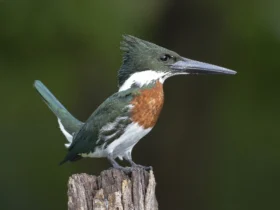In the diverse landscapes of Australia, the Australian Robin (Petroica species) emerges as a delightful and captivating songbird. With its distinctive appearance, melodic calls, and unique behaviors, this bird holds a special place in the hearts of birdwatchers, photographers, and nature enthusiasts across the continent. In this article, we delve into the world of the Australian Robin, exploring its characteristics, behaviors, habitat, and its significance within Australia’s rich avian diversity.
Australian Robin images
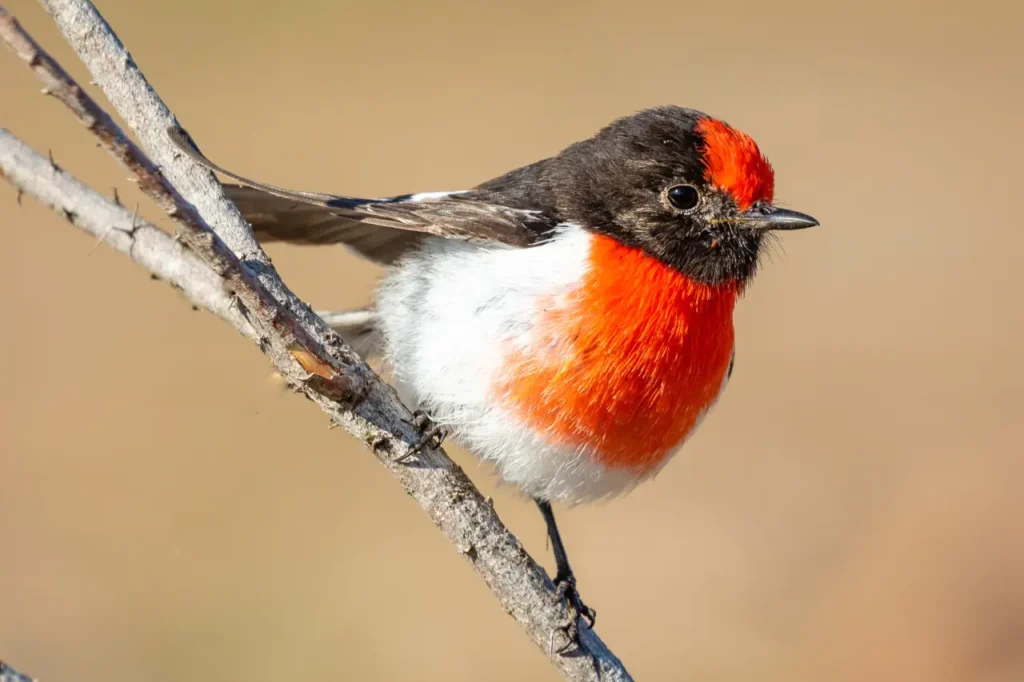
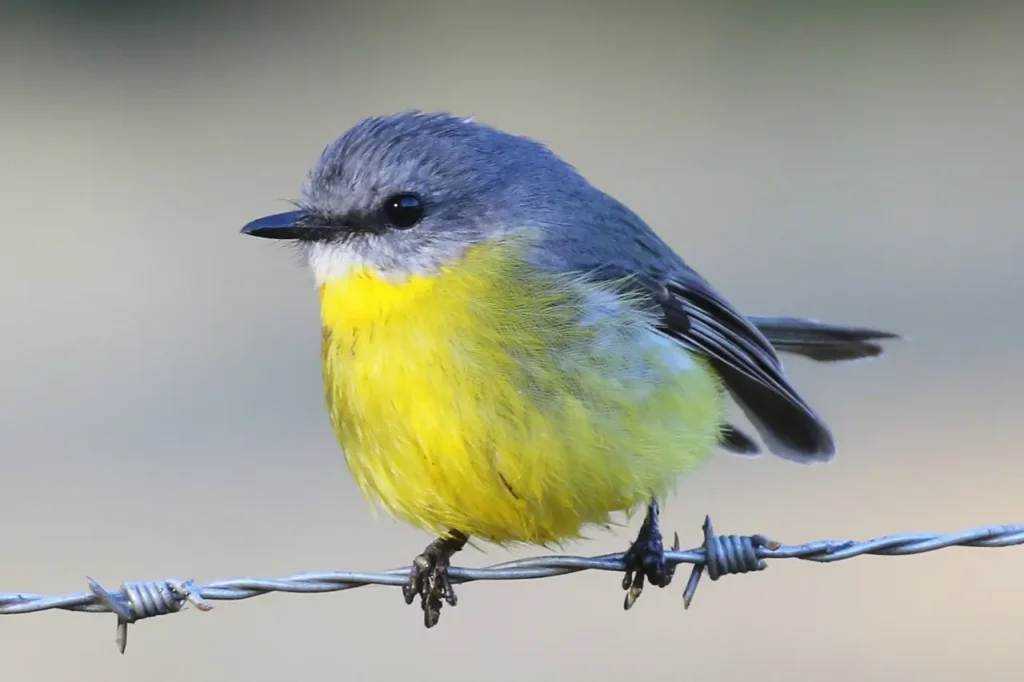
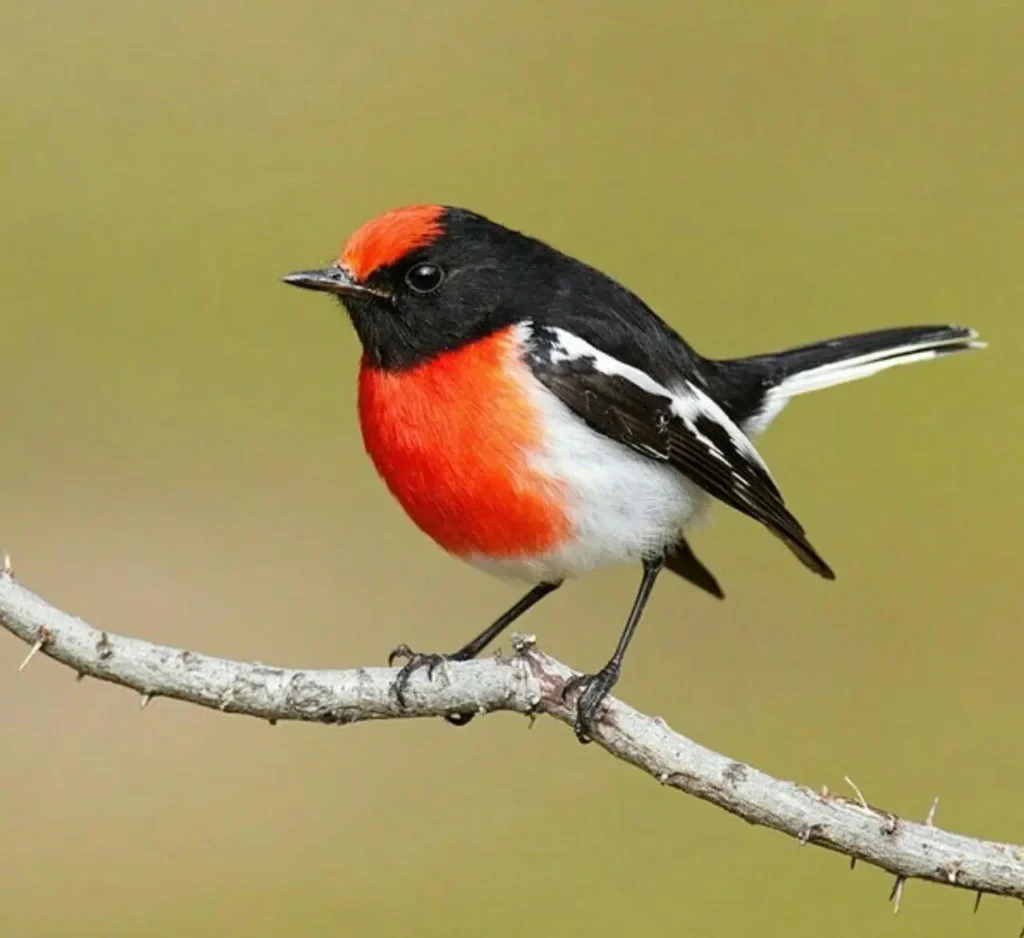
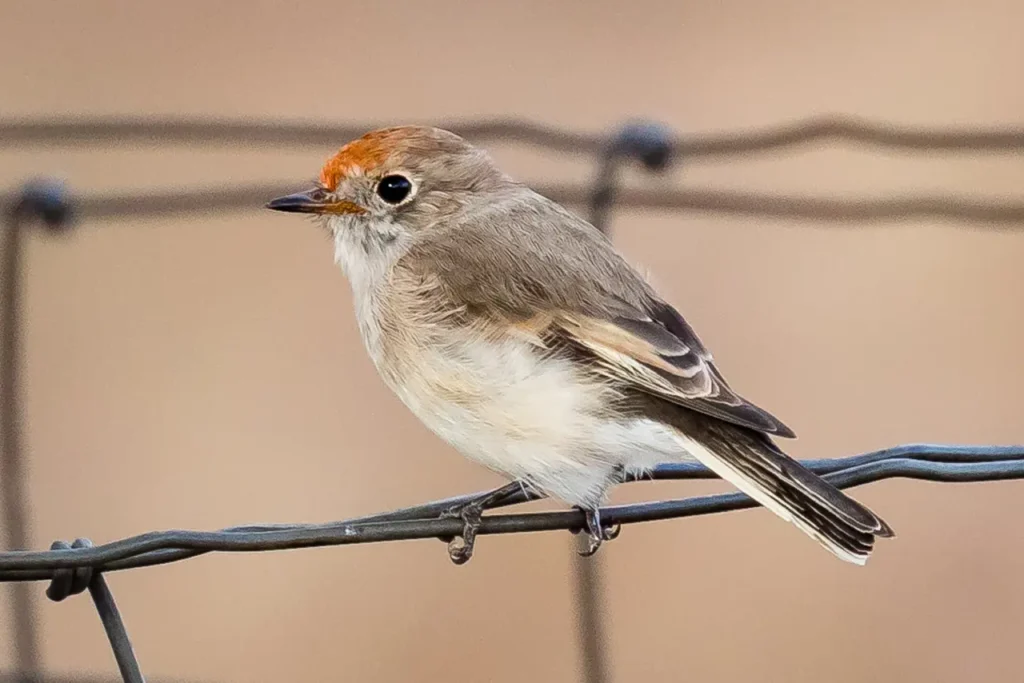
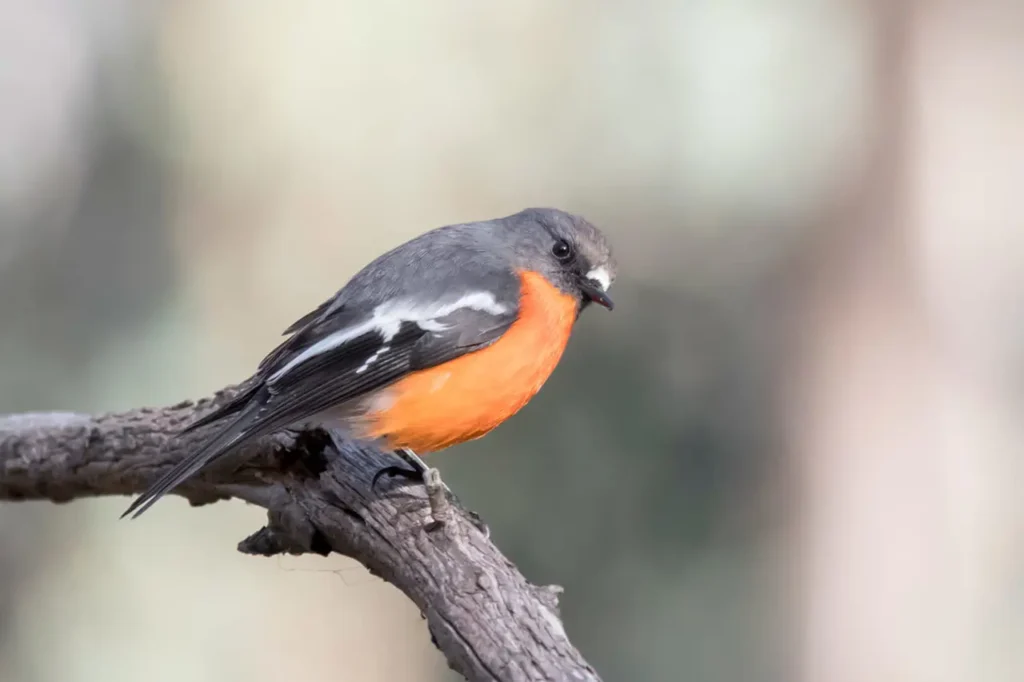
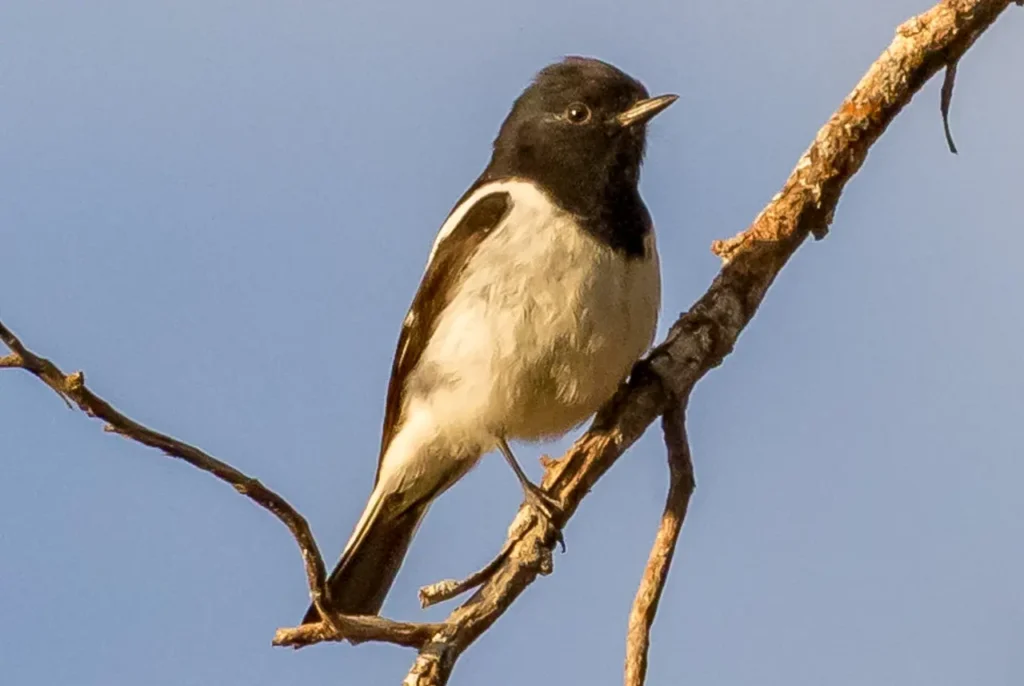
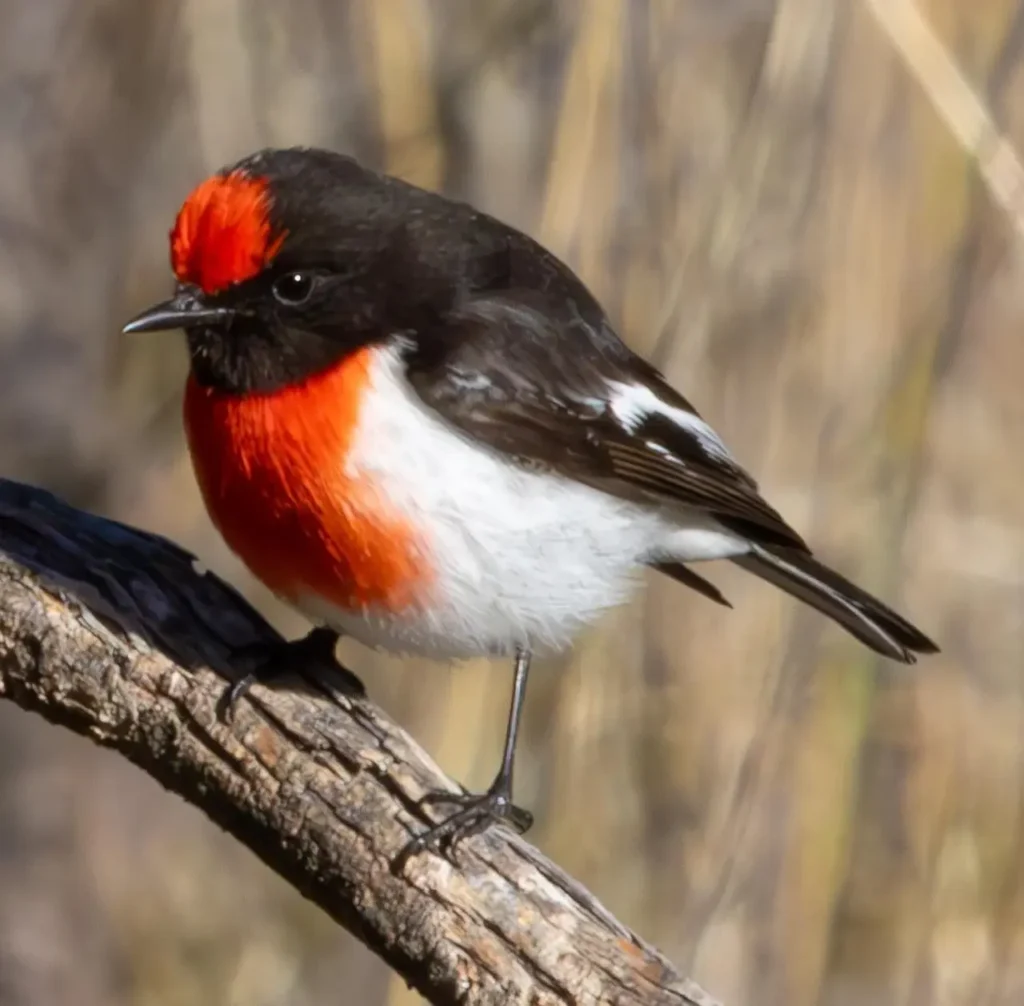
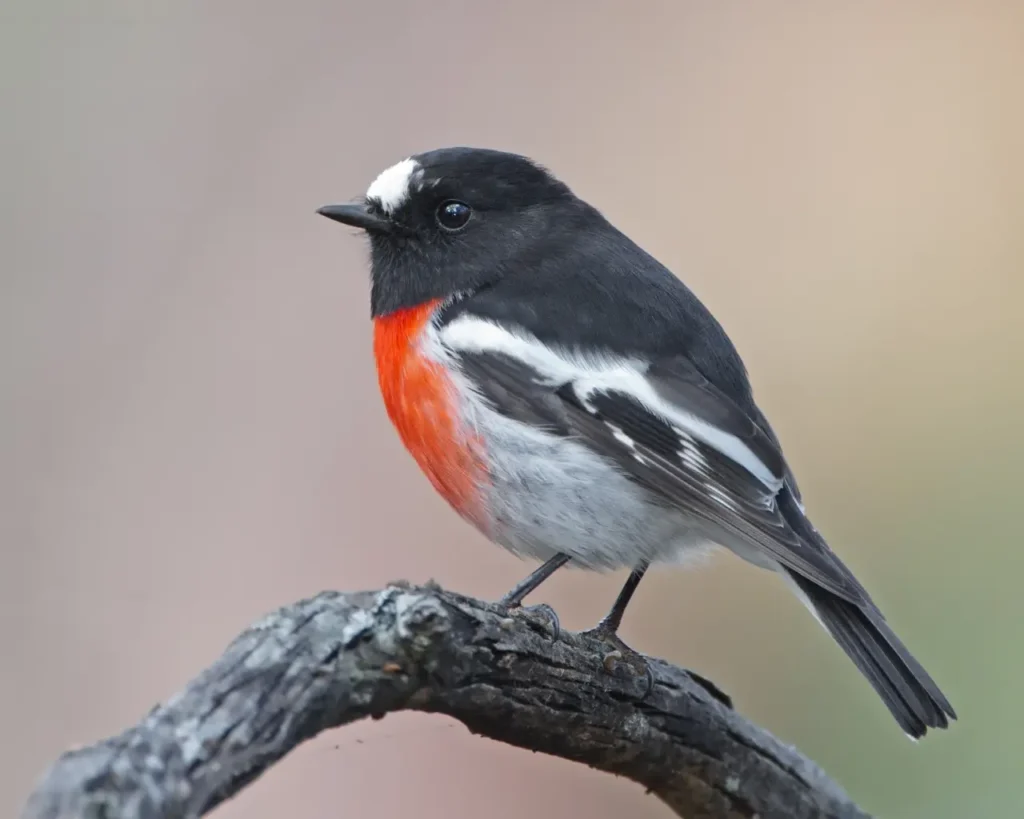
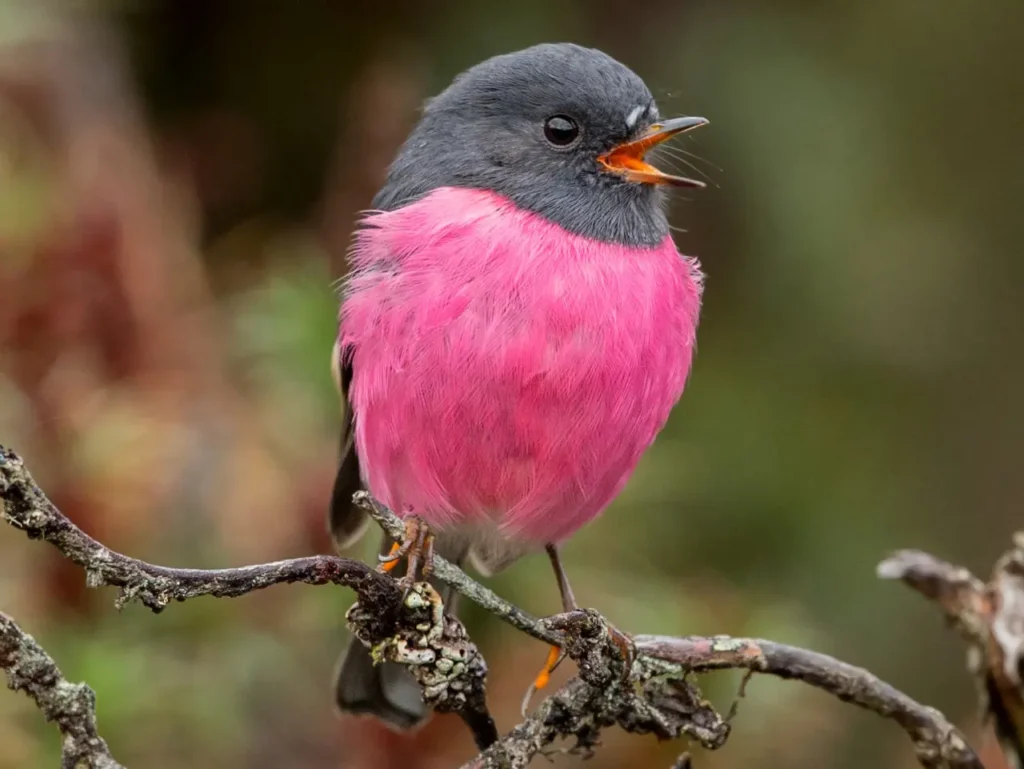
Variety of Species
The term “Australian Robin” encompasses a group of small passerine birds belonging to the Petroica genus. While they share the name “robin,” these birds are not closely related to the robins found in North America and Europe. The Australian Robin species vary in appearance, range, and habitat preferences, contributing to the rich tapestry of avian life in Australia.
Appearance and Characteristics
Australian Robins are known for their eye-catching plumage and unique color combinations. Their colors range from vibrant reds, oranges, and yellows to shades of gray, black, and white. Their distinctive coloration serves multiple purposes, including camouflage and communication.
One common characteristic of many Australian Robin species is the presence of a “white eye.” This white patch around the eye is a defining feature that sets them apart from other songbirds. Additionally, these birds have compact bodies, slender bills, and a charming and curious demeanor.
Hunting and Feeding Behaviors
Australian Robins are insectivorous birds, and their feeding behaviors are marked by agility and precision. They primarily feed on insects, spiders, and other small invertebrates, which they catch by hopping along the ground, perching on branches, or even hovering in mid-air. Their ability to catch insects in flight sets them apart from many other ground-feeding birds.
Habitat and Range
Australian Robins can be found in a wide range of habitats across Australia, including forests, woodlands, grasslands, and even urban gardens. Different species have adapted to specific environments and niches, resulting in a diverse distribution across the continent.
Their presence can be observed from the dense rainforests of the eastern coast to the arid landscapes of the outback, making them a versatile and adaptable group of birds.
Significance and Conservation
Australian Robins hold cultural significance in Aboriginal traditions and stories. They are often featured in indigenous art and storytelling, reflecting their importance in the cultural fabric of the land.
While many Australian Robin species are not considered globally threatened, habitat loss, climate change, and other environmental challenges pose risks to their populations. Conservation efforts aimed at preserving their habitats and raising awareness about their role in ecosystems are crucial for ensuring their continued presence.
The Australian Robin, with its vibrant colors, melodious calls, and diverse species, contributes to the symphony of Australia’s avian diversity. Each species tells a unique story about adaptation, survival, and the intricate relationships between birds and their habitats. By celebrating and protecting the Australian Robin and its habitat, we honor the richness of Australia’s natural heritage and embrace the enchanting beauty of its songbirds.
